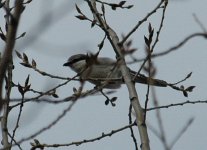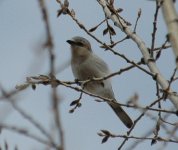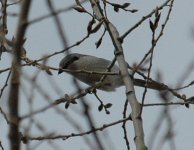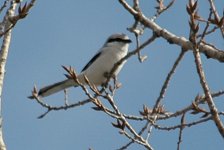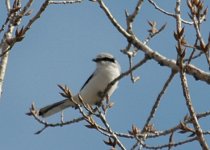A couple of comments on age and location...
The bird looks adult at first glance in the first photo, and first winter in the second. Part is the exposure difference, the tree branches are lighter in the second photo, and so is the bird's appearance (among the unappreciated but routine photographic factors which affect many of the perceptions we form about the images we see here). Also there is an out-of-focus bit of branch in the second photo which interferes with our view of the postocular stripe, making it look weak, as well as putting a touch of brown in the area, which in combination give the bird the first winter appearance that Dave refers to.
The postocular stripe is quite strong in the first photo. However, first winter birds get steadily grayer over the winter, and this bird is nearing the end of winter. Also, there is a touch of brown in the belly region in both photos, that does not appear due to vegetation. So I tend to think Dave is correct, and this is likely a first winter bird, albeit one in its last few weeks of being distinguishable from an adult (though I certainly can't be sure).
As for area, Loggerhead is more of a summer bird for WI and MN. For mid-March, a Northern Shrike (as this bird clearly is) would be much more likely. Within the next couple months the probabilities will of course reverse.




